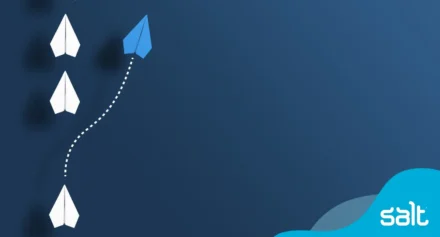Why top hires are a growth multiplier, not a cost
In a high-growth business, one lever consistently outperforms all the others – talent. Not headcount, not hiring speed, but the strategic acquisition of top-tier performers.

From scaling executives to VCs and CFOs, recruitment needs to be reframed as capital allocation. The top hires aren’t a line item; they’re an investment class. When supported in the right way and hired through the right model, they become exponential drivers of enterprise value.
Consider this: studies show the top 10–25% of salespeople can generate 2–5x more revenue than an average peer. Similarly, a visionary product leader doesn’t just ship faster — they ship smarter, unlocking market fit, inspiring engineering teams and driving NPS or funding outcomes.
What I’ve witnessed over the years is that the companies that treat hiring like capital deployment outperform the ones that treat it like procurement.
Value per hire vs. cost per hire
The real question isn’t what a hire costs, but what they deliver. Consider the impact a single top-tier hire can have:
- EBITDA from a GTM leader who re-architects your sales motion.
- ARR from a Head of Product who compresses time-to-market.
- Retention from a brand director who transforms your EVP.
These are not “nice to haves.” In venture-backed businesses, they’re the difference between surviving your burn rate and becoming a breakout success.
The impact of high-performance hiring
Across our Salt portfolio, the difference a top hire can make is unmistakable:
A SaaS firm accelerated its growth dramatically after securing a VP of Sales with prior exit experience. This single strategic hire helped a SaaS firm quadruple its ARR, delivering a 300% increase in under 18 months
A global fintech scaled faster after we embedded a Contract CTO who restructured their data architecture and cut delivery cycles in half.
A digital commerce brand’s NPS jumped 30 points after hiring a CX director from a household name…who we’d placed five years prior.
Each of these examples reinforces a central thesis: when talent quality increases, operational drag decreases.
Permanent vs. Contingent vs. Embedded
Smart operators understand that not all hires need to be permanent. But all hires need to be strategic.
- Permanent: Best when you’re building long-term IP, leadership culture and equity value.
- Contingent: High-velocity delivery, speed to execution and cost flexibility. Especially in transformation or tech cycles.
- Embedded: Ideal for scale-ups or PE-backed firms needing fractional leadership before they can commit full-time.
Your hiring model should flex with your business model. At Salt, our advisory clients often shift between all three and our job is to help them know when and why.
Strategic guidance for boardroom
impact

Talent isn’t an HR function. It’s a boardroom strategy
If you’re scaling a team, planning a fundraise, preparing for acquisition, or facing operational bottlenecks, your next key hire could be the highest ROI decision you make this year.
And yet too many boards delegate hiring decisions to functional leads without aligning to business outcomes. The result? Cost-focused hiring, not value-focused growth.
Great founders ask, “Who do we need to become the business we want to be?” Not just “Who do we need right now?”
- If you’re a CFO, treat hiring like M&A.
- If you’re a VC, ask your founders about their value per hire, not just burn multiple.
- If you’re a founder, bet on the people who will take you where spreadsheets can’t.
And if you need a partner to find them – that’s what we do at Salt.



